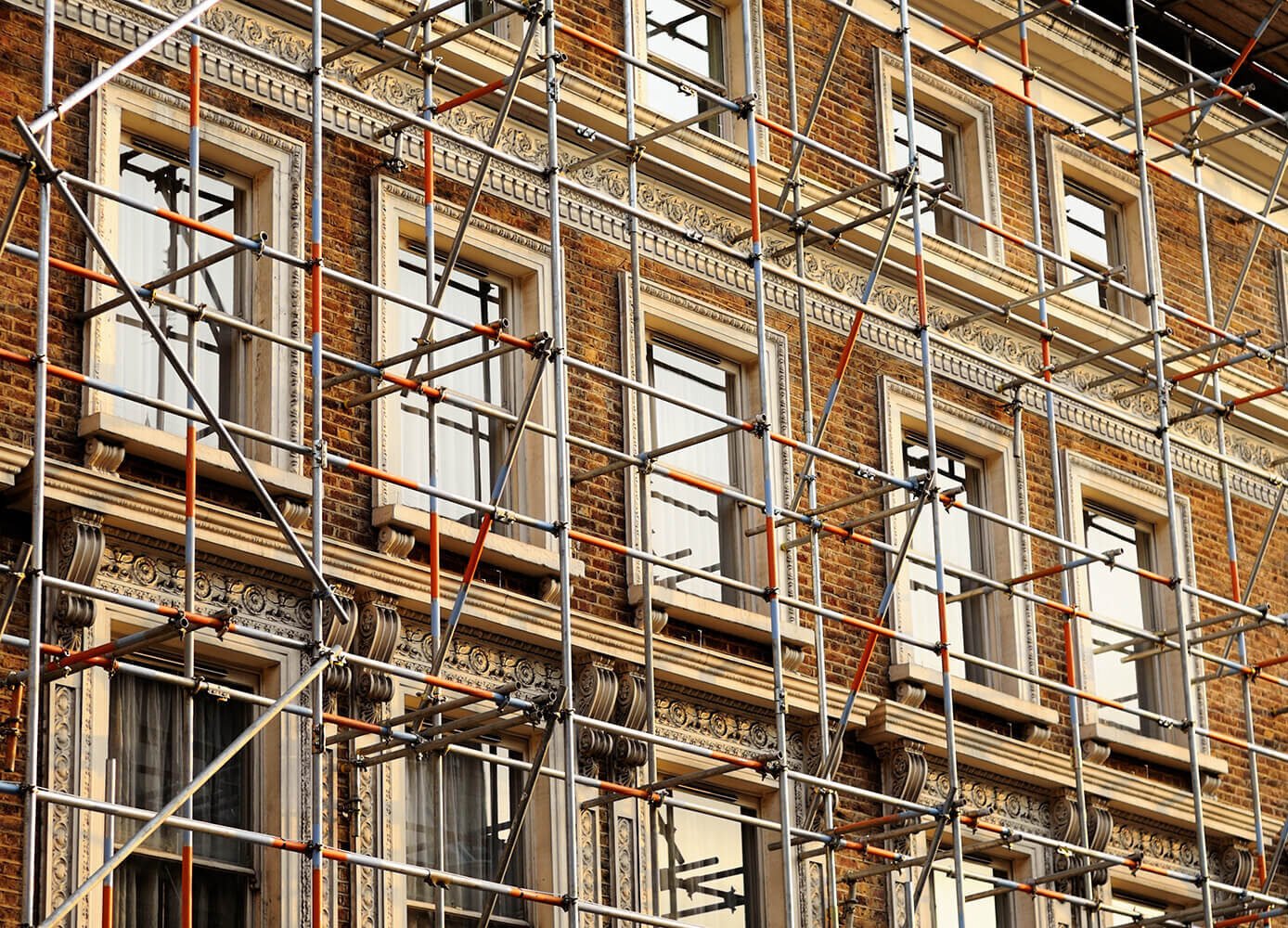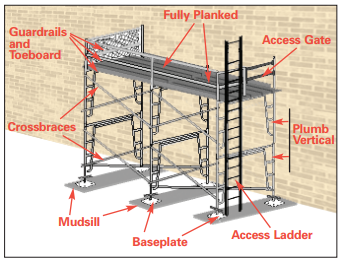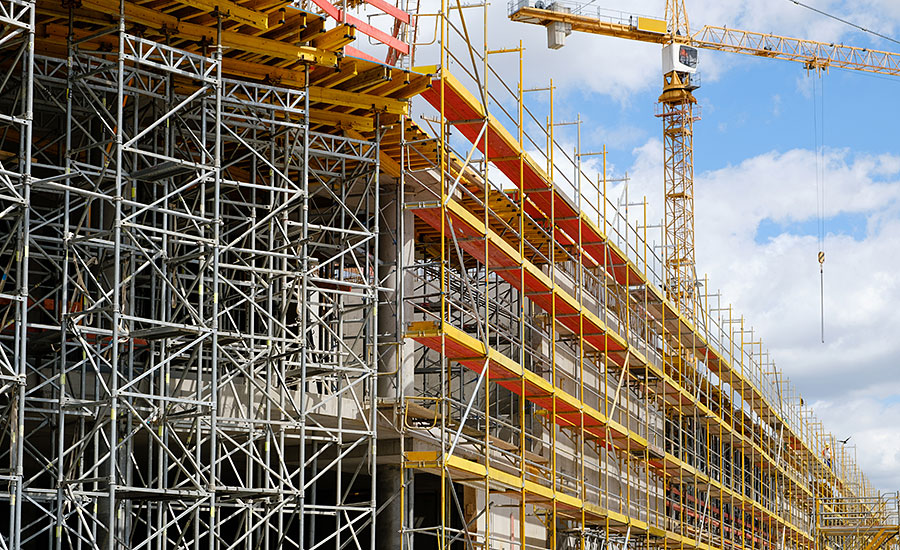Temporary Roof Scaffolding Experts Providing Secure and Reliable Installations
Temporary Roof Scaffolding Experts Providing Secure and Reliable Installations
Blog Article
Discovering the Different Kinds Of Scaffolding Used in Building Tasks
The construction industry counts greatly on various types of scaffolding to satisfy particular job requirements, each offering distinct advantages and applications. Traditional framework scaffolding supplies a tough foundation for general tasks, while suspended scaffolding is important for work on skyscraper structures.

Standard Structure Scaffolding
Standard frame scaffolding is among the most commonly utilized techniques in the building and construction industry as a result of its effectiveness and versatility. This system includes straight and upright structures that are constructed to develop a stable platform for employees and products. The main elements include vertical messages, horizontal ledgers, and diagonal braces, which with each other give a strong structure that can support considerable loads.
One of the key benefits of standard framework scaffolding is its adaptability to different building projects, varying from property buildings to big industrial structures. The modular style permits for easy assembly and disassembly, making it reliable for both long-term and temporary jobs. In addition, the system can be personalized in elevation and width, accommodating various building designs and website conditions.
Security is paramount in scaffolding applications, and standard frame systems are equipped with guardrails and toe boards to stop falls and make certain worker defense. Normal evaluations and adherence to safety and security guidelines are crucial in keeping the honesty of the scaffold (Scaffolding). In general, typical frame scaffolding stays an essential option in the building and construction industry, providing a trustworthy system for labor and boosting overall project efficiency

Suspended Scaffolding
Suspended scaffolding provides an unique solution for construction tasks that need access to elevated surface areas, especially in situations where typical structure scaffolding might be unwise. This sort of scaffolding is generally put on hold from the roof covering or upper degrees of a structure, making use of a system of ropes, wheels, and platforms to produce a functioning room that can be adapted to various elevations.
One of the main advantages of suspended scaffolding is its adaptability. It can be quickly rearranged or reduced to accommodate adjustments in construction needs, making it perfect for jobs such as window setup, frontage job, and maintenance on skyscrapers. Additionally, the minimal impact of put on hold scaffolding allows for much better usage of ground space in metropolitan environments, where space is often restricted.
Safety and security is a vital factor to consider in the usage of suspended scaffolding. On the whole, put on hold scaffolding provides a effective and effective option for accessing hard-to-reach areas in different building and construction scenarios, enhancing both productivity and safety on website.
System Scaffolding
System scaffolding, frequently related to as a contemporary option in the scaffolding market, consists of pre-engineered components that can be quickly assembled and adjusted for numerous building and construction tasks. Scaffolding. This kind of scaffolding is identified by its modular layout, which enables convenience and effectiveness on work websites, fitting architectural demands and different heights
Usually made from high-strength steel or light weight aluminum, system scaffolding provides boosted resilience and stability. The parts consist of vertical articles, horizontal journals, and diagonal braces, which interconnect securely, making certain a durable structure. The layout usually includes standardized installations, streamlining assembly and disassembly procedures, thus reducing labor time and costs.

Rolling Scaffolding
Rolling scaffolding is a versatile choice to standard set scaffolding, made for wheelchair and ease of usage on building websites. This kind of scaffolding contains a system supported by frameworks with wheels, enabling workers to quickly relocate it as needed. The movement function substantially improves productivity, as it lessens downtime related to disassembling and setting up taken care of scaffolding.
Commonly built from lightweight products such as light weight aluminum or steel, rolling scaffolding supplies a strong yet portable remedy for projects calling for regular repositioning - Scaffolding. It is particularly helpful in jobs such as paint, drywall setup, and electric work, where access to various elevations and places is necessary
Safety and security is extremely important in rolling scaffolding layout, with functions such as securing wheels to stop unexpected motion when in operation, and guardrails to secure workers from drops. Furthermore, many versions are adjustable in elevation, suiting different project requirements.
Cantilever Scaffolding

The design of cantilever scaffolding commonly involves using braces or arms anchored to a building or framework, making it possible for the system to prolong external safely. Safety is paramount; thus, these scaffolds need to be crafted to endure various loads and environmental conditions. Regular inspection and upkeep are vital to make sure architectural stability and worker safety her response and security.
Cantilever scaffolding website link is favored for its convenience and efficient use room, making it a prominent choice in metropolitan settings where area constraints prevail. It helps with easier accessibility to high altitudes, eventually adding to the overall performance of construction tasks. As with all scaffolding types, proper training and adherence to safety requirements are vital for employees utilizing cantilever scaffolding.
Verdict
Typical framework scaffolding gives stability, while put on hold scaffolding offers versatility for elevated tasks. System scaffolding assists in quick assembly, and rolling scaffolding improves movement for differing work environments.
Standard framework scaffolding offers a tough foundation for general tasks, while suspended scaffolding is important for work on skyscraper structures.Moving scaffolding is a flexible option to standard fixed scaffolding, designed for wheelchair and simplicity of use on building sites. As with all scaffolding types, appropriate training and adherence to safety standards are critical for employees making use of cantilever scaffolding.
Typical structure scaffolding supplies stability, while put on my sources hold scaffolding provides flexibility for raised jobs. System scaffolding helps with quick assembly, and rolling scaffolding boosts wheelchair for varying job settings.
Report this page